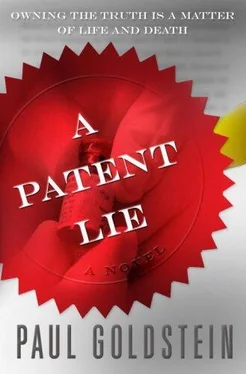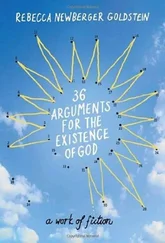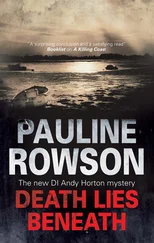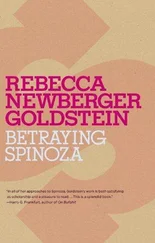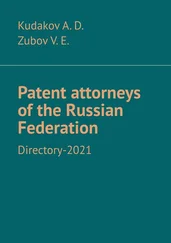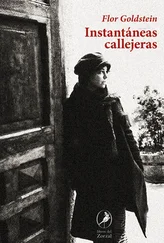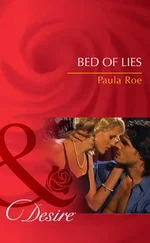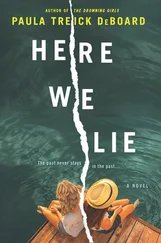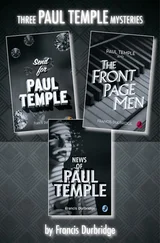Paul Goldstein - A Patent Lie
Здесь есть возможность читать онлайн «Paul Goldstein - A Patent Lie» весь текст электронной книги совершенно бесплатно (целиком полную версию без сокращений). В некоторых случаях можно слушать аудио, скачать через торрент в формате fb2 и присутствует краткое содержание. Жанр: Криминальный детектив, на английском языке. Описание произведения, (предисловие) а так же отзывы посетителей доступны на портале библиотеки ЛибКат.
- Название:A Patent Lie
- Автор:
- Жанр:
- Год:неизвестен
- ISBN:нет данных
- Рейтинг книги:3 / 5. Голосов: 1
-
Избранное:Добавить в избранное
- Отзывы:
-
Ваша оценка:
- 60
- 1
- 2
- 3
- 4
- 5
A Patent Lie: краткое содержание, описание и аннотация
Предлагаем к чтению аннотацию, описание, краткое содержание или предисловие (зависит от того, что написал сам автор книги «A Patent Lie»). Если вы не нашли необходимую информацию о книге — напишите в комментариях, мы постараемся отыскать её.
A Patent Lie — читать онлайн бесплатно полную книгу (весь текст) целиком
Ниже представлен текст книги, разбитый по страницам. Система сохранения места последней прочитанной страницы, позволяет с удобством читать онлайн бесплатно книгу «A Patent Lie», без необходимости каждый раз заново искать на чём Вы остановились. Поставьте закладку, и сможете в любой момент перейти на страницу, на которой закончили чтение.
Интервал:
Закладка:
Farnsworth told them that the list of excuses from jury service was short-“This is service to your country, and service requires sacrifice”-and only when she asked whether any of them had views on the patent system that might affect their ability to render a fair verdict, did a hand shoot up. In the second row, a pale middle-aged woman with flyaway gray hair rose from her chair. “The American patent system is a travesty! It's a criminal conspiracy by corporate America to raise prices and keep poor people from getting the drugs they need to stay alive.”
There was nervous laughter among her neighbors and a few murmurs from the gallery. Seeley flipped through the lined pad, but before he could find the page, Palmieri pointed at his computer screen. Faye Simberkoff was single, a graduate of the UC Berkeley information science school, and now worked at a public library in Oakland. When Seeley looked up, Farnsworth was waiting for him to challenge the prospective juror for bias.
Seeley knew that if he challenged Simberkoff, the judge would excuse her from the jury, but he didn't want to leave the thought hanging in the courtroom that patents are bad, nor did he want any juror to think that he had silenced the woman's views.
“It would help us decide whether to challenge for cause, Judge, if Ms. Simberkoff could expand a bit more on her thoughts about the American patent system.”
Farnsworth saw what he was doing, didn't approve, but asked the librarian to continue if she wished. Vigorously gesturing with a raised fist, the woman enlarged her indictment of the patent cabal to include Wells Fargo Bank, Aetna Insurance Company, and the Roman Catholic Church. This time when Farnsworth said, “Mr. Seeley?” he asked that she be removed for cause, and the judge excused her.
Barnum had positioned himself at the side of counsel's table, where he would, as Seeley anticipated, obscure the jury's view of Palmieri. As the questions continued, Barnum regularly leaned his heft across the table, blind to Palmieri, who was between them, to whisper that Seeley should challenge the prospective juror for cause. Seeley nodded, as if weighing the advice. He had already decided to use one of his peremptory challenges for a pediatrician whose background would give him more credibility with the other jurors than he deserved. Usually physicians try to get out of jury duty, and it bothered Seeley that this one did not; he pictured him in the jury room explaining to the others how Steinhardt's discovery was entirely obvious, and thus unpatentable.
Farnsworth excused two jurors on her own-a woman with a job that made a two-week absence from work difficult, and a man with nonrefundable air tickets to London-and a third, a research employee of the world's largest patent owner, IBM, on a challenge from Thorpe. As each excluded juror departed, the clerk called out another name from the gallery, keeping the fourteen seats filled, until one prospective juror remained whom the judge had not yet questioned, a young-looking software engineer from a small Silicon Valley company.
Palmieri pointed at the laptop screen-Gary Sansone-but Seeley had already started to think of him as the “kid.” With a blond ponytail and a jockey's wiry build, Sansone had an easy smile and the kind of natural authority that could move the others on the jury, even though all of them were older. At Thorpe's request, Farnsworth asked Sansone whether, as an employee at a start-up company, he might have a bias against a giant, multinational pharmaceutical company.
The kid grinned. “That would depend, Your Honor, on how evil and grasping a multinational it is.”
The jury box broke into laughter, and for a full second a smile lit Thorpe's face as he joined in. The jury expert, seated next to him, tugged hard at the hem of his jacket, but he brushed her hand away. With a chuckle in his voice, Thorpe said, “We have no problem with this juror, Your Honor.”
Thorpe had begun his own seduction of the jury. Farnsworth would use her solicitude to make the jurors feel that they were part of her team. Thorpe's tactic was more subtle. Having now seen the phantom of a smile from this austere, sorrowful man, the jurors would work to please him if that was the price to see him smile once more.
The jury liked Sansone, and they wanted Thorpe to like them, both of which meant that if Seeley tried to exclude the kid, he-and his client-would at once become the villains of the trial, even before opening statements. So far, he had measured each of the prospective jurors against a single question: How deeply would Steinhardt's arrogance offend this man or woman? Now, applying the same question to Sansone, he worried. According to the notes Seeley had jotted on the legal pad in front of him, the kid had taken premed classes, mostly in biochemistry, before switching to an electrical engineering major at Santa Clara University. His hobby was bicycle racing, and he read journals like Science and Cell. He might be sympathetic to Vaxtek as a small company but, like the pediatrician, he could also be the authoritative figure in the jury room who second-guessed Steinhardt and the science behind AV/AS. He could be the juror who kept Seeley from the unanimous verdict he needed.
Seeley decided not to fall into Thorpe's trap.
“We have no objection to this juror, Judge.”
“Then,” Farnsworth said, “if you each exercise your three peremptories, we'll have a jury.”
Seeley tore off from the legal pad the remaining fourteen pages on which he'd written the names and backgrounds of the prospective jurors, and spread them across the table. Barnum pointed at two of the pages, one of them Sansone's. “You can still kick him off,” he said.
Seeley looked past Barnum to the jury box, into the arresting, deep blue eyes of Sansone, then shook his head and picked instead the pediatrician and the two who said their hobby was foreign travel, guessing that, perhaps more cosmopolitan than the others, they would be less responsive to the patriotic bias he had built into his case-protecting American research ingenuity against a foreign poacher. When Palmieri agreed, he wrote the three names on a fresh sheet of paper.
Thorpe was already at sidebar, waiting to hand his three candidates up to the judge. Farnsworth took the two sheets, compared them and removed four of the Post-its she had placed on a chart that indicated the numbered seats in the jury box.
“You see this sometimes,” she said. “You both want to remove the same person.” The retired career counselor whose hobby was foreign travel. She returned their sheets to them. “Why don't you try again.”
Seeley considered what Thorpe's reasons might have been for excluding the career counselor, and again wrote in her name. He folded the sheet and handed it to the judge. Thorpe wrote on his piece of paper and handed it up. This time, after comparing the peremptories, Farnsworth smiled and removed two more Post-its from the chart, leaving eight.
“We have a jury,” Farnsworth said. She handed the chart down to the clerk, and nodded to her to swear in the jury. After that, the judge told them what their duties would be, the procedures they would need to follow in coming to court every day, and cautioned them not to read, watch, or listen to any press coverage of the trial.
Four white faces looked out of the jury box, one Asian, two His-panics, and one black. Five were women, three men. Their ages ranged from twenty-six to seventy-one. Among them were a retired school-teacher; a real estate broker whose avocation was collecting antique dolls; two secretaries, one with a graduate degree in education; a hospital nurse; an AT amp;T cable splicer from Napa; an accountant who said she lived with her “domestic partner”; and Sansone, the kid.
Rolling his chair back and forth at counsel's table, Barnum was a worrier. “The one with the ponytail,” he said. “You're sure he won't be a problem?”
Читать дальшеИнтервал:
Закладка:
Похожие книги на «A Patent Lie»
Представляем Вашему вниманию похожие книги на «A Patent Lie» списком для выбора. Мы отобрали схожую по названию и смыслу литературу в надежде предоставить читателям больше вариантов отыскать новые, интересные, ещё непрочитанные произведения.
Обсуждение, отзывы о книге «A Patent Lie» и просто собственные мнения читателей. Оставьте ваши комментарии, напишите, что Вы думаете о произведении, его смысле или главных героях. Укажите что конкретно понравилось, а что нет, и почему Вы так считаете.
